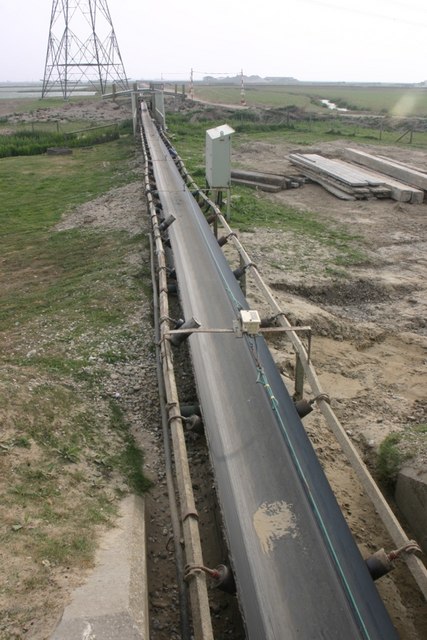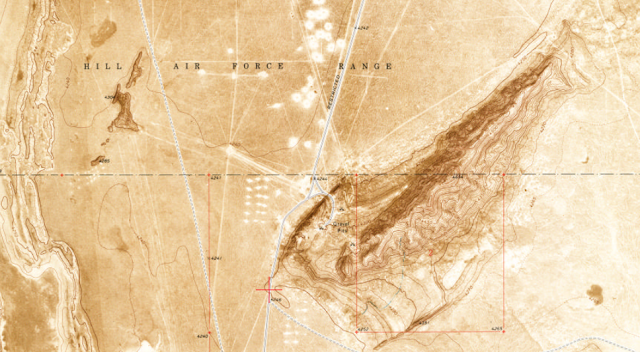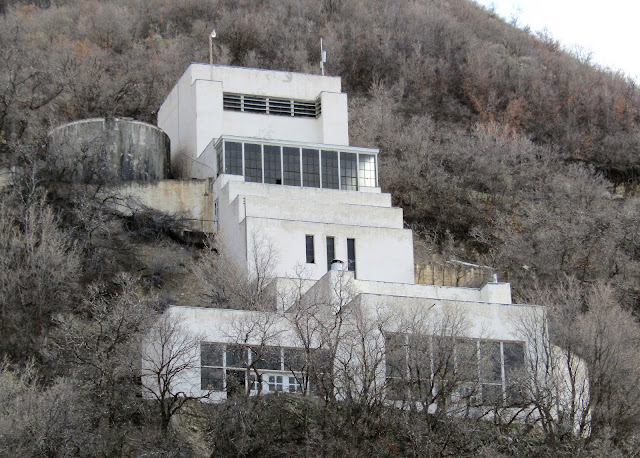The Longest Conveyor Belt in the World
by Peter
This is the story of the longest conveyor belt of the world, at least in 1979.
From the passage of the Federal-Aid Highway Act in 1956, under the direction of President Eisenhower, federal money became available to construct durable, divided interstates across the country. A limited number of miles were allowed and states worked with the federal government to designate routes. Interstate 80, or I-80, was one of the two initial major routes in Utah, but construction originally focused on difficult areas such as Echo Canyon and the West Desert.
By 1979, only one segment, about 4.5 miles in length, remained unconstructed. This was the area immediately south of the Salt Lake Airport, from Redwood Road to the west. I'm not entirely sure why this segment was last, but it may have been because there was a somewhat reasonable alternative in the Lincoln Highway, which ran along 3500 South in western Salt Lake.
Finally, the funding became available and the state put construction of the project out to bid. S.J. Groves & Sons out of Reno won the contract to do the grading prior to the actual construction. Initially, two sources had been considered to provide the massive amount of gravel necessary to raise the highway to the required level and construct interchanges. One was to the west, near Black Rock (where I-80 curves around the point of the Oquirrh Mountains), and the other was Antelope Island. Initially, Antelope Island was discarded because practically the entire island would need to be acquired to have access to its gravel deposits.
However, the state decided to buy the island anyway, in order to expand the state park that had previously been established at the northern end, and so the island was chosen to host the gravel pits.
S.J. Groves chose to use an unusual method to transport the gravel from the island to the site of construction (a staging area was created at what is now the 5600 West exit). Instead of constructing a causeway or bridge for trucks, or looping across the existing causeway at the north end of the island, Groves built a 13-mile long conveyor built. At the time, this was the longest conveyor belt in the world, making it into the Guinness Book of World Records. The conveyor belt operated from 1979 to 1980 and moved approximately 16 million cubic yards of material, equal to the volume of around 5 Great Pyramids of Giza.
The orange is the area of the gravel pits, while the green is the route of the conveyor belt.
The gravel pits were regraded, recontoured, and revegetated. They are still visible if you look closely on aerial photographs, but are not obvious. The route of the conveyor belt is definitely still visible and is sometimes used as a road by landowners in the area moving cattle or other animals in and out.
For other interesting items in the area, see my posts on the Salt Lake Army Air Force Jeep Ranges and Phantom Wye.
The current longest conveyor belt in the world is approximately 61 miles long and is located in Western Sahara on the west coast of Africa.
Hotels in Salt Lake can be found here.
This is the story of the longest conveyor belt of the world, at least in 1979.
From the passage of the Federal-Aid Highway Act in 1956, under the direction of President Eisenhower, federal money became available to construct durable, divided interstates across the country. A limited number of miles were allowed and states worked with the federal government to designate routes. Interstate 80, or I-80, was one of the two initial major routes in Utah, but construction originally focused on difficult areas such as Echo Canyon and the West Desert.
By 1979, only one segment, about 4.5 miles in length, remained unconstructed. This was the area immediately south of the Salt Lake Airport, from Redwood Road to the west. I'm not entirely sure why this segment was last, but it may have been because there was a somewhat reasonable alternative in the Lincoln Highway, which ran along 3500 South in western Salt Lake.
Finally, the funding became available and the state put construction of the project out to bid. S.J. Groves & Sons out of Reno won the contract to do the grading prior to the actual construction. Initially, two sources had been considered to provide the massive amount of gravel necessary to raise the highway to the required level and construct interchanges. One was to the west, near Black Rock (where I-80 curves around the point of the Oquirrh Mountains), and the other was Antelope Island. Initially, Antelope Island was discarded because practically the entire island would need to be acquired to have access to its gravel deposits.
 |
| Antelope Island. The gravel pits would be just off the photo to the right. By Famartin (Own work) [CC BY-SA 4.0 (https://creativecommons.org/licenses/by-sa/4.0)], via Wikimedia Commons |
However, the state decided to buy the island anyway, in order to expand the state park that had previously been established at the northern end, and so the island was chosen to host the gravel pits.
S.J. Groves chose to use an unusual method to transport the gravel from the island to the site of construction (a staging area was created at what is now the 5600 West exit). Instead of constructing a causeway or bridge for trucks, or looping across the existing causeway at the north end of the island, Groves built a 13-mile long conveyor built. At the time, this was the longest conveyor belt in the world, making it into the Guinness Book of World Records. The conveyor belt operated from 1979 to 1980 and moved approximately 16 million cubic yards of material, equal to the volume of around 5 Great Pyramids of Giza.
The orange is the area of the gravel pits, while the green is the route of the conveyor belt.
The gravel pits were regraded, recontoured, and revegetated. They are still visible if you look closely on aerial photographs, but are not obvious. The route of the conveyor belt is definitely still visible and is sometimes used as a road by landowners in the area moving cattle or other animals in and out.
For other interesting items in the area, see my posts on the Salt Lake Army Air Force Jeep Ranges and Phantom Wye.
The current longest conveyor belt in the world is approximately 61 miles long and is located in Western Sahara on the west coast of Africa.
Hotels in Salt Lake can be found here.



Comments
Post a Comment